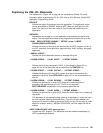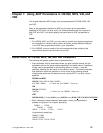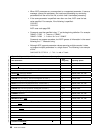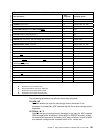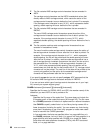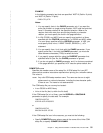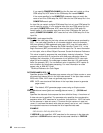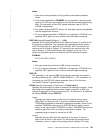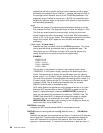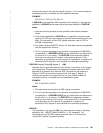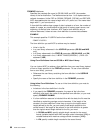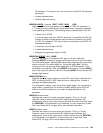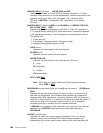| Notes:
| 1. Data sets must be specified as fully-qualified names without quotation
| marks.
| 2. If the libraries specified for FORMDEF are not specified in the same order
| used by the PSF start-up procedure, the printed and converted results may
| differ. For information on how PSF selects resources, refer to
PSF for
|
OS/390: Customization
.
| 3. For systems before MVS/DFP Version 2.3, data sets must be concatenated
| with the largest block size first.
| 4. This is a required parameter if USERLIB is not specified. If FDEFLIB is not
| specified, ACIF reports an error condition and terminates processing.
FDEFLIB=
filetype1
[,
filetype2
][,
filetype...
] (VM)
Specifies the file types that define the form definition libraries. A maximum of 8
file types can be specified. This parameter also specifies the search order in
which ACIF searches for a particular form definition. ACIF first looks for the
resource with a file type of
filetype1
. If it cannot find the resource with a file
type of
filetype1
, it continues the search with
filetype2
, and so on, until it
locates the requested resource or exhausts the list of specified file types.
EXAMPLE
FDEFLIB=FDEF38PP,TEMPFDEF
Notes:
1. File type values must conform to CMS naming conventions.
| 2. This is a required parameter if USERLIB is not specified. If FDEFLIB is not
| specified, ACIF reports an error condition and terminates processing.
FDEFLIB
This parameter is not used for VSE. Form-definition resources are located in
the library defined by the // LIBDEF PHASE,SEARCH=(...) JCL statement. For
information on how PSF/VSE selects resources, refer to
Print Services
Facility/VSE: System Programming Guide
.
FIELD
n
=
record,column,length
| {‘
literal value
’ | X'literal value'}
Specifies the data fields to be used to construct the indexing information. These
data fields can be specified either as literal values (constants), or ACIF can
retrieve the data from the input records of the file. A maximum of 16 fields can
be defined (FIELD1 through FIELD16).
record
Specifies the relative record number from the indexing anchor record.
When ACIF is indexing the file, it uses the information specified in the
TRIGGERn parameters to determine a page-group boundary. When all the
specified TRIGGERn values are true, ACIF defines the indexing anchor
record as the record where TRIGGER1 is located. TRIGGER1 becomes the
reference point from which all indexing information is located. The
supported range of values for
record
are ±0–255.
column
Specifies the byte offset from the beginning of the record. A value of 1
refers to the first byte in the record. For files containing carriage control
characters, column 1 refers to the carriage control character. For those
Chapter 7. Using ACIF Parameters in OS/390, MVS, VM, and VSE 93



